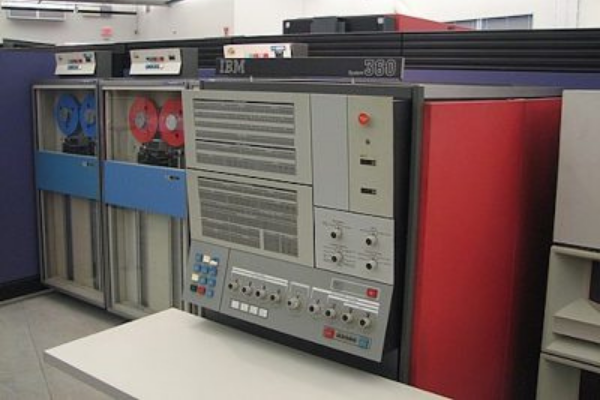Global Bank finds a self-funding approach to Mainframe Modernization with GFT and CloudFrame

A leading Global bank knew it needed to modernize its mainframe as costs increased, but it was also concerned about the impact on its daily activities and business disruptions. Digital transformation leader GFT and COBOL to Java modernization experts CloudFrame worked together to transform two batch jobs and their Cobol programs into a new environment in just three weeks. The project delivered greater-than-expected cost reductions without impacting the development teams supporting the application.
Background
Mainframe usage and associated costs continue to grow. Many financial services firms rely on mainframes to deliver the services their customers take for granted, from checking account balances to conducting transactions and managing their money. The country-specific unit of a Top 50 global bank was no different and had been trying to reduce mainframe-related costs for some time.
As part of this modernization effort, the bank wanted to modernize its mainframe operations, particularly some of its COBOL applications. The project needed to guarantee uptime, produce functional equivalent results, and minimize performance impacts.
Customer Challenges
When the bank decided to take the first steps in modernizing its mainframe, it spoke to its trusted advisor, GFT, who had been engaged with its digital transformation efforts. Due to prior discussions, GFT recognized that CloudFrame Relocate could deliver the changes sought by the bank and engaged with CloudFrame on this project.
Alpesh Tailor, GFT Executive Director, described the customer situation this way; “The customer, like many banks, rely heavily on mainframes to run their operations, so there is an aversion to risk when it comes to anything that could affect the mainframe. We knew that to deliver the modernization the customer wanted, we needed a solutions partner that wasn’t just focused on rip and replace but could move the applications at a pace the customer was comfortable with. Knowing CloudFrame’s proven capabilities, it became clear that CloudFrame Relocate and our implementation and mainframe expertise would fit the customer’s cautious nature in delivering the modernization required.”
GFT and CloudFrame created a joint team to deliver the project under a consolidated methodology that drew on the former’s mainframe expertise in financial services transformation and the latter’s COBOL application modernization experience.
The team recognized that the best way to demonstrate how the bank could reduce its consumption costs was to deliver a project leveraging its existing zIIP processor capabilities. The zIIP cost can be up to 85% less than standard CP processors.
In addition to reducing costs, the team knew it needed to achieve functional equivalence. To be successful, the Java programs needed to perform the same way as their mainframe counterparts and produce the same precise results. It would have been unacceptable if the calculations were inconsistent and the results were non-identical, as this would differ from historical data.
Solution
The project scope covered the transformation of a set of batch jobs and their Cobol programs which access DB2, VSAM, and flat files. To do this, the team installed the CloudFrame Relocate software.
The project then moved into testing, analyzing the outputs from both a technical and business perspective and measuring the consumption of resources both before and after the transformation.
The team worked iteratively to identify differences or areas of issue and to understand the pattern creating those anomalies. So, rather than focus on fixing individual problems, the team was able to find the underlying issue and solve it.
The team found some issues, and by fixing the patterns causing the differences, they could move on quickly and complete testing within a week.
Venkat Pillay, Founder and CEO of CloudFrame, said, “When people talk about digital transformation, many organizations worry that it means ripping everything out and replacing it. They’ve seen many projects fail to deliver because of this approach. By modernizing incrementally, we can focus on one particular part of the project, such as the application, make sure it’s meeting the needs of the organization in its modernized state, and then, when the customer determines they are ready, they can begin to look at its integrations and data sources. It’s not a big-bang move, but one designed to go at a pace the customer is comfortable with.”
The Results
Usually, a project of this scope aims to deliver a 50% reduction in cost, but this work by the GFT and CloudFrame team achieved more than 65% savings, significantly overdelivering.
Perhaps even more importantly, the team achieved verified functional equivalence, demonstrating that, using CloudFrame Relocate, modernized COBOL applications could function on Java and produce the same results.
The project also demonstrated no impact on the bank’s development teams, as they could continue maintaining COBOL programs, testing, and promoting as usual in their SDLC.
What’s next?
The bank is now positioned to take the savings of this project to fund additional application modernization projects using the GFT and CloudFrame self-funding modernization approach.
While the results outlined above are specific to this bank, other clients are also engaging GFT and CloudFrame to achieve similar benefits. The GFT and CloudFrame offering provides an automated conversion approach, making the shift from COBOL to Java fast and safe and enabling a self-funded modernization journey.
Related Post

Common Shifting COBOL Compute Mistakes
Shifting COBOL compute to less expensive platforms is a great first step…

3 Risk Mitigation Strategies for Mainframe COBOL Compute Cost Projects
Big iron isn’t going away. Regardless of the thousands (or maybe tens…

Is It Time to “Modernize” your Modernization Plans?
Over the last several decades, I have spoken to many organizations about…


Recent Comments